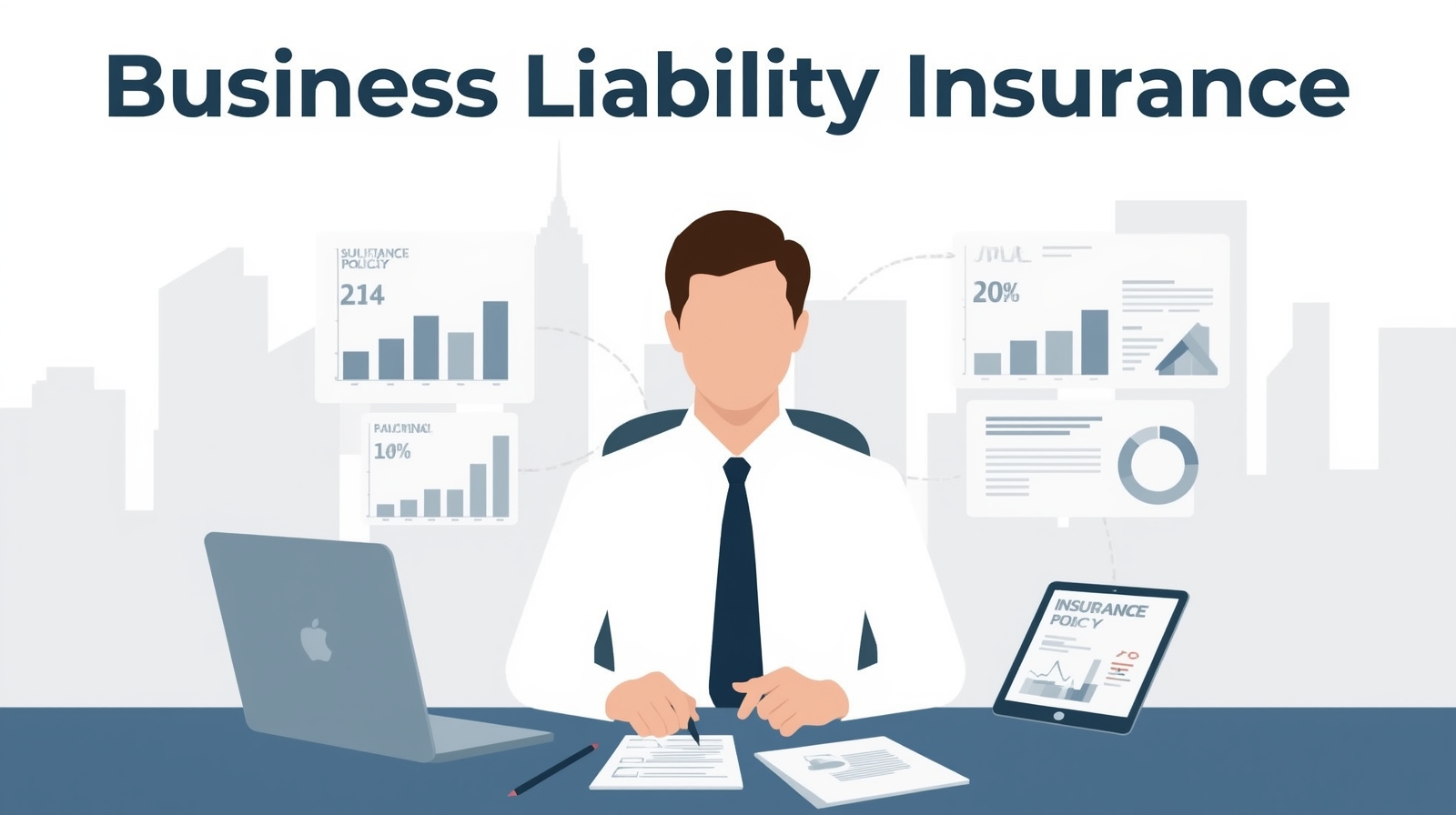Running a business comes with freedom, but it also comes with responsibility. Whether you’re a small café owner, a freelance consultant, or a growing e-commerce brand, unexpected problems can pop up at any time. That’s where business liability insurance steps in — it’s your financial safety net when things go wrong.
Imagine this: A customer slips on a wet floor, a product you sell causes an allergic reaction, or a client sues you for a missed deadline. Without proper insurance, your business could face huge legal bills and potential bankruptcy.
In this guide, we’ll break down what business liability insurance is, the different types, modern risks most people overlook, real-world examples, and smart tips to choose the right coverage. We’ll keep it simple, engaging, and practical — so you can protect your business without getting lost in confusing jargon.

Why Business Liability Insurance Matters
Business is unpredictable. One mistake, accident, or misunderstanding can snowball into a costly lawsuit. Even if you believe your company operates safely, accidents can happen anytime.
Here’s why liability insurance isn’t optional anymore:
- Protects against lawsuits – Even if you win, legal fees can drain your savings.
- Covers medical and property damage – If someone gets hurt or something gets damaged, you’re financially protected.
- Keeps your reputation safe – A covered claim avoids negative PR spiraling out of control.
- Required for contracts and licenses – Many clients, landlords, and governments demand proof of liability insurance.
Without coverage, you risk losing more than just money — you risk your credibility, clients, and long-term growth.
Types of Business Liability Insurance (With Examples)
Different businesses face different risks, which is why liability insurance comes in various forms. Here’s a breakdown:
1. General Liability Insurance (GLI)
- What it covers: Third-party injuries, property damage, and advertising mistakes.
- Example: A customer trips over loose wiring in your store and sues you. GLI covers their medical bills and legal costs.
2. Professional Liability Insurance (Errors & Omissions)
- What it covers: Mistakes, missed deadlines, or professional negligence.
- Example: A graphic designer delivers the wrong file format, costing a client a big campaign. The client sues for damages.
3. Product Liability Insurance
- What it covers: Defective products causing harm or injury.
- Example: A bakery sells cupcakes that cause allergic reactions. This coverage handles lawsuits and settlements.
4. Cyber Liability Insurance (Modern Must-Have)
- What it covers: Data breaches, hacking, and online security threats.
- Example: A hacker steals customer credit card info from your e-commerce site. Cyber coverage manages notifications, investigations, and compensation.
5. Directors & Officers (D&O) Liability Insurance
- What it covers: Lawsuits against company leaders for alleged mismanagement or wrongful acts.
- Example: Investors sue your startup’s board for poor financial decisions.
6. Employer Liability Insurance (Required in Some Countries)
- What it covers: Workplace injuries or illnesses suffered by employees.
- Example: A warehouse worker injures their back while lifting boxes.

5 Modern Risks Most Businesses Overlook
While traditional policies cover common risks, today’s business environment introduces new threats:
- Cybersecurity Breaches – Data hacks can bankrupt small businesses if uninsured.
- Social Media Liability – A wrong tweet can trigger defamation lawsuits.
- Influencer Marketing Risks – Product endorsements can lead to claims if promises aren’t met.
- Environmental Liability – Industries like manufacturing face fines for accidental pollution.
- Statutory Liabilities – Non-compliance with data, labor, or privacy laws can be costly.
Pro Tip: If you run a digital business, consider adding cyber liability and media liability riders.
When to Choose a Business Owner’s Policy (BOP)
A Business Owner’s Policy combines general liability, property insurance, and sometimes business interruption coverage into one affordable package.
Why it’s smart:
- Lower premiums compared to buying separate policies.
- Perfect for small businesses, freelancers, and startups.
- Saves you from juggling multiple insurers.
Average costs:
- General Liability: $25 – $115/month
- Professional Liability: $45 – $165/month
- BOP Packages: $40 – $115/month
Bundling isn’t just cheaper; it also simplifies claims since one insurer handles everything.
Real-World Example: Why Skipping Insurance Can Be Costly
Meet Sarah, a freelance event planner. She thought liability insurance was unnecessary.
During a client’s wedding, a decorative vase fell and injured a guest. The medical bills and lawsuit cost her $35,000 — all out of pocket.
Had she spent $40/month on coverage, she would’ve saved thousands.
Lesson: Insurance feels expensive until you need it.
How Much Does Business Liability Insurance Cost?
Pricing varies based on your:
- Industry – A café faces more physical risks than a freelance writer.
- Location – Urban businesses often pay higher premiums.
- Business Size – More employees = more exposure.
- Coverage Limits – Higher protection costs more but offers better security.
| Type of Insurance | Average Monthly Cost | Best For |
|---|---|---|
| General Liability | $25 – $115 | Retailers, service providers |
| Professional Liability | $45 – $165 | Consultants, freelancers |
| Cyber Liability | $70 – $250 | E-commerce, tech startups |
| Product Liability | $30 – $120 | Manufacturers, sellers |
| BOP (Bundle) | $40 – $115 | Small businesses |
Checklist: How to Choose the Right Coverage
When selecting a policy, follow these steps:
- Assess your risks → Identify worst-case scenarios.
- Know your contracts → Some clients require specific coverage.
- Compare multiple insurers → Prices vary widely.
- Check exclusions carefully → Know what’s not covered.
- Review annually → Your risks change as your business grows.
Quick Tip: Always ask about add-ons like cyber, advertising, and director protection.

Key Takeaways
- Business liability insurance protects you from lawsuits, damages, and unexpected financial losses.
- Choose policies based on your industry, size, and risks.
- Bundle coverage with a BOP to save money.
- Don’t ignore modern threats like cyber attacks and social media risks.
- Review your policy every year to stay fully protected.
Final Thoughts
Running a business is exciting, but it’s risky without proper coverage. Whether you’re a one-person consultancy or a growing company, business liability insurance keeps you safe from financial ruin when the unexpected happens.
Instead of worrying about accidents, lawsuits, or online mishaps, you can focus on scaling your business confidently. So, take a few minutes today to review your coverage — future you will thank you.




